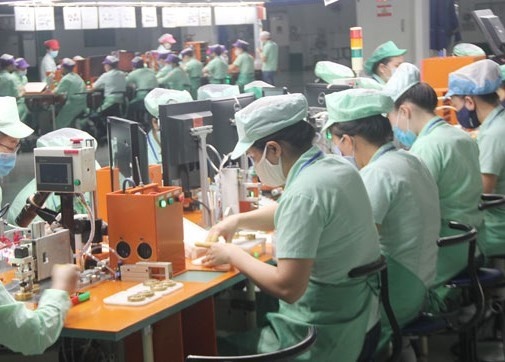MoIT urged to reconsider retail restrictions proposal
MoIT urged to reconsider retail restrictions proposal
Unclear regulations in a draft proposal from the Ministry of Industry and Trade, on the classification and management of certain types of retail, could complicate the operations of local businesses and affect profits.

The draft, which was unveiled earlier in July, stipulates that convenience stores should mainly serve customers who buy goods within a radius of 500 metres. In addition, the draft requires all supermarkets, mini-marts, commercial centres, and other outlets to have parking spaces.
The draft also notes that such stores should offer 3,000 items on average, and apply modern technologies in sales.
While the proposal aims to meet the requirements of state management, and at the same time help consumers distinguish the types of retail that are developing strongly, the draft has received 70 comments so far, in which some point out this regulation is not feasible and creates red tape.
The Vietnam Chamber of Commerce and Industry (VCCI) said in a document sent to the ministry (MoIT) that shop owners cannot possibly know where their customers live, while also suggesting the MoIT removes other provisions in the draft, saying they would interfere with the freedom to conduct business in Vietnam and add unnecessary operational costs.
The draft also notes that a commercial centre must have an area for entertainment activities, office leasing, and an area for financial and banking activities. “These regulations also unduly interfere with enterprise freedom,” said the VCCI document. “The layout of the business space depends on the needs of the customer and the supply capacity of the business. Businesses and consumers will adjust themselves according to market developments without the need for state intervention.”
Vu Thi Hau, who is the chairwoman of the Vietnam Retail Association, said that the draft should be revised to adapt to the real facts as well as avoid misunderstanding or controversy.
“Retail is the bridge between production and consumption. Therefore, if the bridge is healthy, the economy will develop. Therefore, any document issued must be directed to the business, creating the most favourable conditions for the business to develop, not inhibiting the development of the business,” she said.
Over the past 12 years, the number of supermarkets and trade centres has increased rapidly from 567 supermarkets and 95 trade centres in 2010 to over 1,160 supermarkets and more than 250 trade centres, according to the Ministry of Industry and Trade.
Le Viet Nga, deputy head of the Ministry of Industry and Trade’s Domestic Market Department, explained that the regulation on customer living radius is not meant to restrict access to customers for stores, and the criteria has been built on the basis of documents from a number of countries such as Japan, South Korea, and China, with adjustments in accordance with the reality of Vietnam.
“Currently, we are searching for comments on the draft until the end of July. The team will also continue to consult experts, associations, and related organisations in order to ensure advantages for business and remove certain conditions,” Nga confirmed.
At a talk show last week, Pham Thi Thuy Linh, a representative of Central Retail, said that the MoIT’s moves to create a new draft are necessary. “However, the draft can be reviewed to select the criteria for classifying commercial infrastructure in order to meet the needs of customers and the management of the state,” Linh said.
























